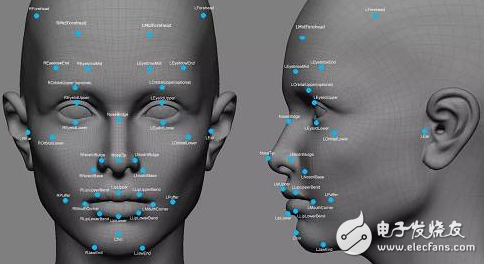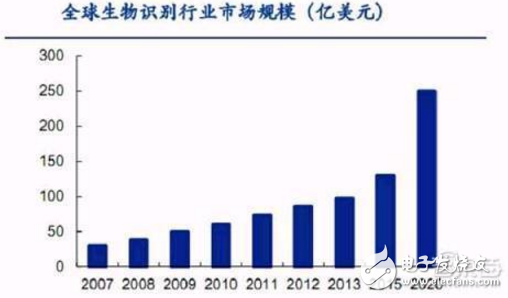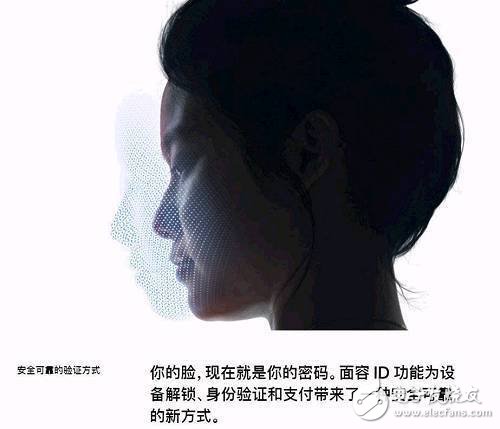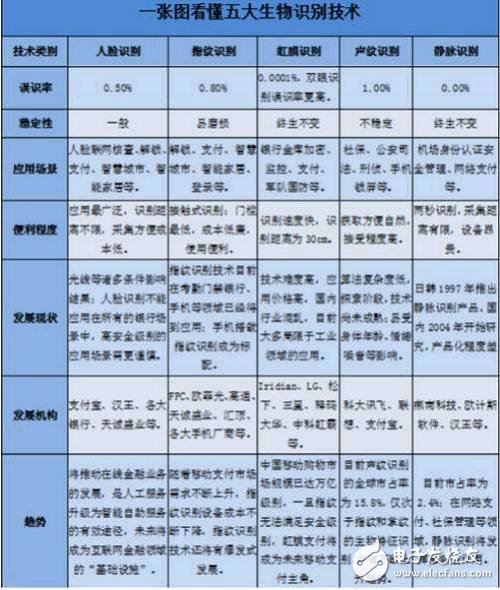Apple's new face recognition makes biometric recognition once again, mobile payment is closely related to the development of smart phones, and the security of mobile payment has a great relationship with biometric technology. Brushing the face at least for the moment to give us an accurate direction, that is biometric technology.
The development of biometrics technology and industry is “following the windâ€. According to the statistics of the Prospective Industry Research Institute, the global market scale of biometrics technology grew at an average annual rate of 21.7% from 2007 to 2013. In 2015, the global market for biometrics technology will reach 13 billion U.S. dollars, and will reach 25 billion U.S. dollars in 2020. The average annual growth rate in five years is about 14%.

At present, our common biometrics are mainly divided into face recognition, fingerprint recognition, iris recognition, voiceprint recognition and vein recognition. Iris recognition and vein recognition are the most preferred among the common biometric technologies.

The most common users are face recognition and fingerprint recognition, and the stability of the two is slightly lacking. Similar to face recognition, although the fingerprint of the person is unique, the collection is convenient, but it is easy to wear, on the user's mobile phone. At least the password will become the second choice for the spare tire. Once used for off-line payment from mobile phones, it is difficult to guarantee a sufficient success rate, and copying fingerprints can also pose a greater security risk. As for the human voice, it is easier to change, so voiceprint recognition is not suitable for payment.
Face recognition technology is the most widely used and most convenient to use.
The research of face recognition system began in the 1960s. After the 1980s, with the development of computer technology and optical imaging technology, the application stage that really entered the primary stage was in the late 90s, and it was in the United States, Germany, and Japan. Technology is the mainstay.
Nowadays, the application of face recognition technology is not limited to business places. It has gradually penetrated into the ordinary people's home in the form of various smart homes. However, the face recognition system information storage is still based on the language that the computer can recognize, that is, digital or specific code, and the security is discounted. Perhaps, many female friends are miserable about the face recognition function, change their hair style, draw a makeup, it will not be recognized.
This time, Apple's Face ID has the ability to learn autonomously. It can record the subtle changes in your facial facial features every day. You can unlock them when you wear makeup, wear glasses, hats or keep your beard! Because your facial features have not changed.

Fingerprint recognition technology is mature, but not for everyone
Each fingerprint has several unique measurable feature points, each with approximately seven features, and one of the ten fingers produces a minimum of 4,900 independently measurable features. The fingerprint recognition technology extracts the feature values ​​from the fingerprint by analyzing the feature points that can be measured by the fingerprint, and then performs authentication. At present, China's second-generation ID card has achieved fingerprint collection, and all major smartphones have realized fingerprint unlocking functions.
Compared with other biometric technologies, fingerprint recognition has been widely used in consumer electronics, security and other industries. Through time and practice testing, technology is constantly innovating. Although each person's fingerprint recognition is unique, it does not apply to every industry and everyone. For example, people who work with their hands for a long time will be troubled by fingerprint recognition. If their fingers are damaged or wet or dry, the fingerprint recognition function will be invalid.
Iris recognition safety is in the first place
Compared with other biometric technologies, iris recognition misrecognition rate and rejection rate have reached the recognition level of zero probability, and iris recognition is non-contact recognition, which is convenient and efficient. The iris is unique to each person and has a uniqueness that cannot be copied. The security level is currently the highest. However, the application price of iris recognition is also proportional to its technical difficulty, which is slightly more expensive than other recognition technologies.
Voiceprint recognition is cheap and easy to obtain
The so-called voiceprint is a sound wave spectrum that carries speech information displayed by an electroacoustic instrument. It is ideal for remote identity verification, requiring only a microphone or phone, and a mobile phone to log in remotely over a network (communication network or internet).
However, the shortcomings of voiceprint recognition are also very obvious, and the requirements for the environment are very high. In noisy environments and mixed speech, voiceprints are not easy to obtain; people's voices are also affected by age, physical condition, age, mood, etc. Change; different microphones and channels have an impact on recognition performance.

The use of vein recognition in the market is not high
Vein recognition is to obtain a personal finger vein distribution map by a finger vein recognition instrument, and store the feature values. When comparing, the vein map is taken in real time, and the feature values ​​are extracted to match, thereby identifying the individual.
Vein recognition technology dates back to 1983. At the time, Kodak's Joseph Rice discovered the idea of ​​using hand-backed-end vascular infrared imaging as an identification method when inventing infrared bar code technology, inventing the earliest hand vein feature recognition technology. In 1987, Joseph Rice received the first patent for this technology, but did not pay enough attention in the security field.
Vein recognition has four characteristics: high anti-counterfeiting, easy to use, fast identification and high accuracy. The most important point is that the characteristics of finger vein recognition have been internationally recognized as unique and comparable to the retina, in the case where the rejection rate (the same structure map, but the algorithm is identified as different) is less than one in ten thousand. The falsification rate (different structure diagram, which is recognized by the algorithm as the same) can be less than one in 100,000.
For example, in the finger vein identification technology provided by the British company Staller, by binding the biometric information of the finger vein to the bank card, the finger can be used to complete the payment in the consumer place supporting the related technology.
In terms of safety, Staller said that finger vein technology is the safest method of biometric identification. Compared with traditional fingerprint recognition, the finger vein recognition technology has a distinctive feature, that is, it must be live and have flowing blood, so information cannot be copied or stolen. Also, it will not be used because the fingers are wet or dirty, damaged, etc.
However, the current vein recognition function is not used in the market, and it also has the disadvantage of being difficult to circumvent. For example, the dorsal vein of the hand may still change with age and physiology, and the permanent has not been confirmed; there is still the possibility that the registration cannot be successfully registered; because the collection method is limited by its own characteristics, the product is difficult to be miniaturized; the collection device has special requirements. The design is relatively complicated and the manufacturing cost is high.
Focusing on the development and production of Wireless Charging products that make life easier.
Supply various wireless charger including multifunctional Wireless Charger, Car Wireless Charger, Magnetic Wireless Chargin, Wireless Charging Mouse Pad, etc.
We help 200+ customers create custom wireless charging products design for various industries.
Manufacturing high quality products for customers according to international standards, such as CE ROHS FCC REACH UL SGS BQB etc.
Wireless Charging Pad,Wireless Phone Charger,Wireless Car Charger,Bluetooth Charger
TOPNOTCH INTERNATIONAL GROUP LIMITED , https://www.micbluetooth.com